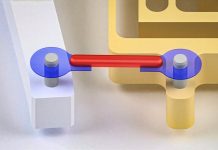
Imagine a robotic dog that can not only walk on land but also swim through water with the grace of a real animal.
That’s exactly what a team of researchers has developed—an Amphibious Robotic Dog designed to move efficiently both on land and in water.
This breakthrough, recently published in the journal Bioinspiration and Biometrics, draws its inspiration from the way real mammals, especially dogs, navigate their environments.
Most amphibious robots today are modeled after reptiles or insects.
While these designs have their strengths, they often struggle with agility, speed, and carrying capacity.
By basing their design on the swimming style of dogs, the researchers were able to overcome these challenges.
The robotic dog can easily transition between land and water, maintaining stability and speed in both environments.
To make this possible, the team engineered a unique paddling mechanism. This system mimics the natural swimming motion of dogs, allowing the robot to move through water with surprising efficiency.
The engineers paid careful attention to weight distribution and buoyancy, ensuring that the robot remains stable while swimming. This kind of thoughtful design helps the robot maintain smooth, controlled movements, even when switching between walking and swimming.
The researchers tested three different swimming styles, each designed to mimic a real animal’s movement.
Two of the styles were based on the traditional doggy paddle, aimed at achieving the highest speeds possible in the water. The third style, which resembled a trotting motion, focused more on stability.
Through these tests, the doggy paddle style emerged as the fastest, reaching speeds of 0.576 kilometers per hour in the water. On land, the robot moves at a steady pace of 1.26 kilometers per hour.
The amphibious robotic dog is more than just a cool piece of technology—it represents a major step forward in the field of biomimicry, where engineers look to nature for design inspiration.
According to Yunquan Li, the lead researcher, the secret behind the robot’s smooth transition between land and water lies in its bioinspired trajectory planning.
By copying the way real dogs paddle and walk, the team was able to create a robot that is not only faster and more stable but also more lifelike.
This groundbreaking design opens the door to many exciting possibilities.
An amphibious robot that moves so efficiently could be used for environmental research, military missions, and even rescue operations. Its ability to navigate both land and water smoothly makes it a versatile tool for exploring places that are hard to reach.
The research team is optimistic about the future of this technology, seeing it as a significant advancement in nature-inspired robotics.
With further development, the amphibious robotic dog could soon be used in real-world applications, proving that sometimes the best designs come straight from nature itself.
Source: KSR.



